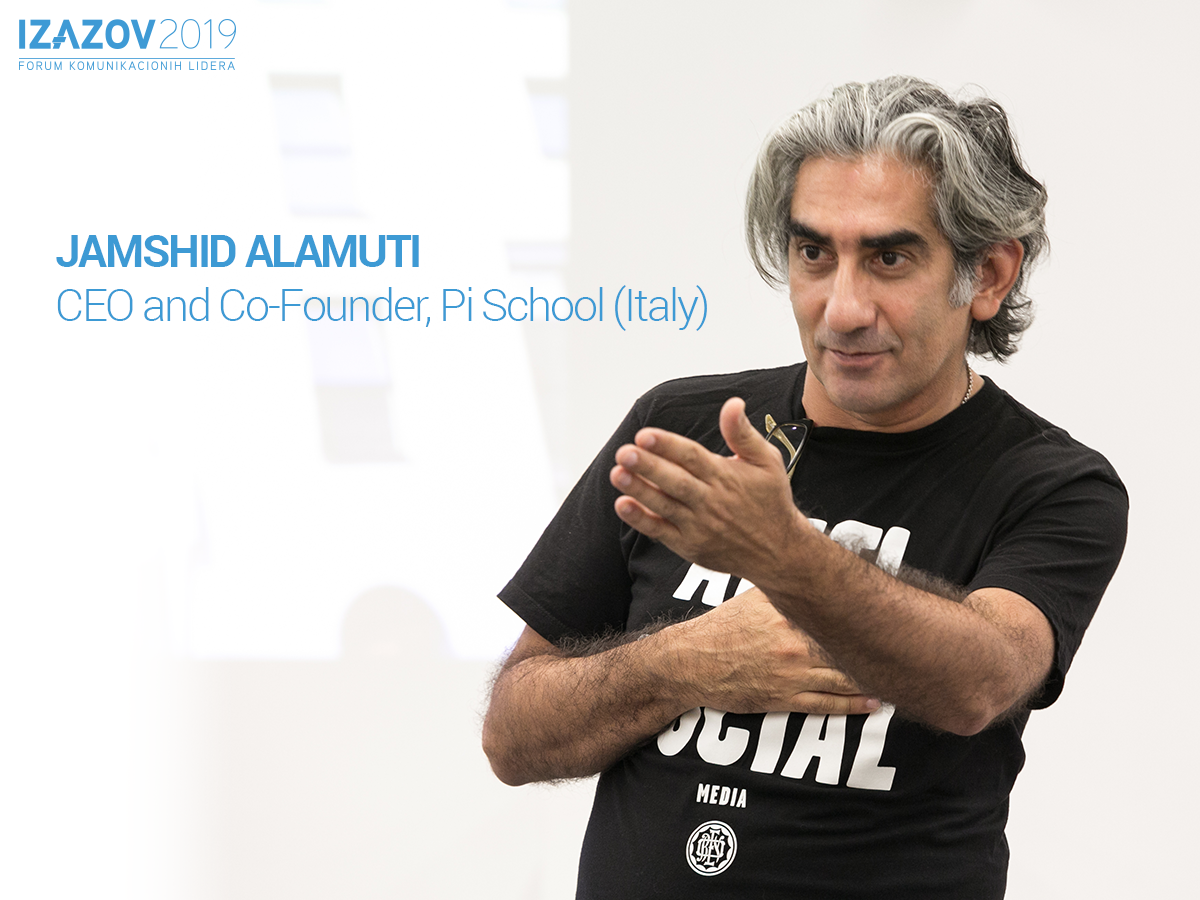The fifth regional forum of communication leaders IZAZOV 2019, will be held on March 25 and 26 at the Hyatt Regency Hotel in Belgrade.

The main speaker of this year’s Forum, Mr. Alamuti will speak on the topic “Creativity driven Transformation”, that is, the new process of creativity and how it can be used to solve real problems and transform the business. On this occasion, we talked with him about what a creative organization of the future looks like, how organizations define themselves as the most suitable business model, and whether there is some kind of discord between creative talents and traditional work models.
In your opinion, what is the creative organization of the future?
– From the structure point of view, it is a de-centralized organisation, an agile collective with specific focus. There will be more of small creative organisations, but each with a strong point of focus on one subject matter. It will be much more hands on and integrated in the product and service development process of their clients
How agencies and companies can use creativity to transform their business?
– Creativity has always been used to transform business, this is nothing new. The question agencies and companies will answer together will be how they use creativity to create a real impact and solve real world problems with their brands, products and services. Creativity will be used to solve problems and not sell goods. Business problems will be solved by creativity, if they are adding value to the survival and bettering the world.
Is one a business model works for all agencies? Why?
– Absolutely not. Agile future agencies will focus on solving different problems, based on their specific knowhow and talent. Each solution concept will have a different pattern, different type of client, different type of consumer or target group and accordingly requires a different business model. We are entering the era what I call “collective individualism”. Everything will be customised, so will be the business model for each specific service.
In your opinion, is there the disconnect between creative talents and traditional working models? What talents prefer today over agencies/companies?
– Absolutely! The gap between creative talents and traditional working models is huge. The key obstacle: today’s traditional agencies, still follow the old way of hiring, interviewing and with that they support the traditional concept of how creativity is schooled. At the same time, organisations still try to sell the same old image and young talent follows the same pattern without questioning, and only after they enter the corporate world they realise that the system is broken. Talents of today and tomorrow, need ownership of the vision, and output, they need flexibility, they need to believe and see the purpose of the organisation. After all it is their planet we are handing over the responsibility of to, and they need to buy into what we ask them to take over.
What will be the biggest challenge for the creative industry in 2019?
– Closer integration of Technology / adapting to the needs of the upcoming generation, their living habits / establishing a new understanding for the creative process in order to solve social and corporate challenges.
Why are transparency and responsibility in the industry so important for all of us?
– Transparency, responsibility, sustainability and mindfulness has always been important. This has not changed at any time. So the question is not why it is important, the question is what to do, so that organisations understand the seriousness of integration of these words truly in their culture and how they turn it into actionable strategy. Those organisations which fail doing so, lose talents, lose consumers and fail their shareholders accordingly.